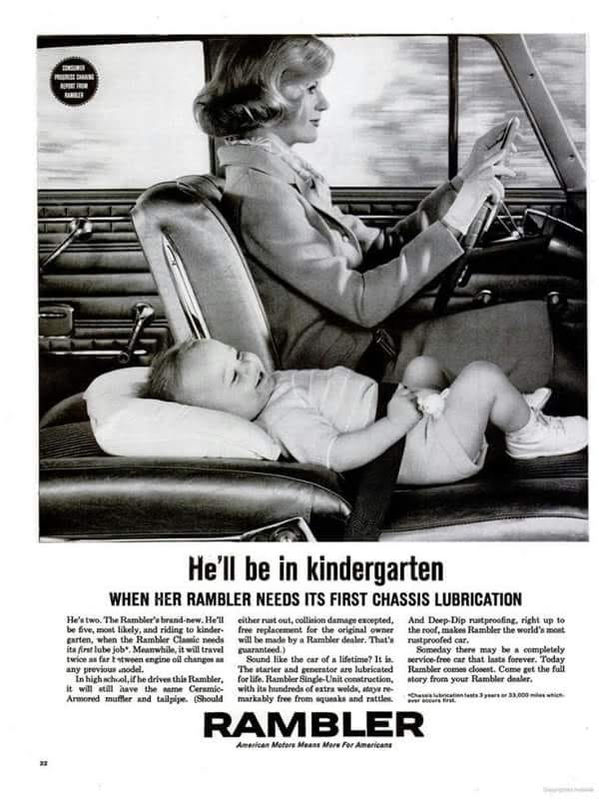Posted by Jack

Is it time to pack up and head East? Some small companies in Southern California are moving logistics operations to Texas and other neighboring states to reduce overhead. (iStockphoto)
California is the great role model for America, particularly if you read the Eastern press. Yet few boosters have yet to confront the fact that the state is continuing to hemorrhage people at a higher rate, with particular losses among the family-formation age demographic critical to California’s future.
Since the recovery began in 2010, California’s net domestic out-migration, according to the American community survey, has almost tripled to 140,000 annually. Over that time, the state has lost half a million net migrants with the bulk of that coming from the Los Angeles-Orange County area.
In contrast, during the first years of the decade the Bay Area, particularly San Francisco, enjoyed a renaissance of in-migration, something not seen since before 2000. But that is changing. A recent Redfin report suggests that the Bay Area, the focal point of California’s boom, now leads the country in outbound home searches, which could suggest a further worsening of the trend.
Who’s leaving?
One of the perennial debates about migration, particularly in California, is the nature of the outmigration. The state’s boosters, and the administration itself, like to talk as if California is simply giving itself an enema — expelling its waste — while making itself an irresistible beacon to the “best and brightest.”
The reality, however, is more complicated than that. An analysis of IRS data from 2015-16, the latest available, shows that while roughly half those leaving the state made under $50,000 annually, half made above that. Roughly one in four made over $100,000 and another quarter earned a middle-class paycheck between $50,000 and $100,000. We also lose among the wealthiest segment, the people best able to withstand California’s costs, but by much smaller percentages.
The key issue for California, however, lies with the exodus of people around child-bearing years. The largest group leaving the state — some 28 percent — is 35 to 44, the prime ages for families. Another third come from those 26 to 34 and 45 to 54, also often the age of parents.
The key: Too expensive housing, not enough high-wage jobs
Our analysis? California is in danger of pricing itself out for moderate wage earners, and particularly families. Taxes, poor educational performance, congestion and signs of slowing growth are no doubt contributing factors. But the big enchilada in California — by far the largest source of distortion in living costs — is housing. Over 90 percent of the difference in costs between California’s coastal metropolises and the country derives from housing. Coastal California is affordable for roughly 15 percent of residents, down from 30 percent in 2000 and 30 percent in the interior, from nearly 60 percent in 2000. In the country as a whole, affordability hovers at roughly 60 percent.
 President Trump launched his re-election campaign tonight in Fl. He spoke to a packed house and his supporters were going absolutely wild with cheers. I’ve seen nothing like it, these people were enthusiastic beyond measure. And the jeers the democrats got whenever they were mentioned by Trump, wow, it was very telling of how reviled dems have become.
President Trump launched his re-election campaign tonight in Fl. He spoke to a packed house and his supporters were going absolutely wild with cheers. I’ve seen nothing like it, these people were enthusiastic beyond measure. And the jeers the democrats got whenever they were mentioned by Trump, wow, it was very telling of how reviled dems have become.







































 But, few are paying attention to spending because right now the economy is growing at the rate of 3%, inflation is under control and employment is at record levels. Life is good, except we’re still spending far more than we take in. Question: What happens when a recession returns, as is inevitable, how will the deficit impact us then? Nobody is looking down the road at where this over-spending is taking us. If there is any sort of leadership in Congress at the moment, it’s management by polling.
But, few are paying attention to spending because right now the economy is growing at the rate of 3%, inflation is under control and employment is at record levels. Life is good, except we’re still spending far more than we take in. Question: What happens when a recession returns, as is inevitable, how will the deficit impact us then? Nobody is looking down the road at where this over-spending is taking us. If there is any sort of leadership in Congress at the moment, it’s management by polling. they are selling appeals to a staggering number of voters. And there’s the big problem, 90% of politicians are poll watchers. They will jump on whatever bandwagon that will get them to another term, even if it means more deficit spending. We’ve got to stop that kind of thinking – even if it means taking extreme measures.
they are selling appeals to a staggering number of voters. And there’s the big problem, 90% of politicians are poll watchers. They will jump on whatever bandwagon that will get them to another term, even if it means more deficit spending. We’ve got to stop that kind of thinking – even if it means taking extreme measures.









 Happy Father’s Day to all the Dads out here that have worked so hard to provide for their family. I hope your kids do something special for you tomorrow – you deserve it.
Happy Father’s Day to all the Dads out here that have worked so hard to provide for their family. I hope your kids do something special for you tomorrow – you deserve it.
